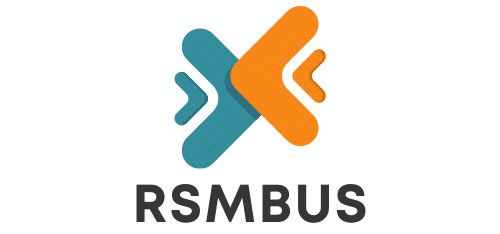What Are the Effective Digital Detox Strategies for UK Tech Employees?

Technological advancements have streamlined work processes, but they have also led to an overdependence on digital devices. In the UK, tech employees, in particular, are often the most affected, finding themselves engrossed in screens for extended durations. This continuous exposure to digital media may lead to health complications and affect individuals’ well-being. A study shows that excessive screen time can lead to mental health issues and even tech addiction. Therefore, a ‘digital detox’—a period where one refrains from using tech devices—is a necessity for these individuals. In this article, we will explore various effective digital detox strategies for UK tech employees.
Understanding the Need for a Digital Detox
Before diving into the digital detox strategies, it is crucial to understand why it is necessary in the first place. The term ‘digital detox’ refers to a period when a person refrains from using tech devices like smartphones, televisions, computers, tablets, and social media sites.
Cela peut vous intéresser : How to Use Augmented Reality for Enhancing In-Store Customer Experiences in UK Retail?
The advent of technology has intertwined our lives with the digital world. This phenomenon is particularly apparent among tech employees, who spend most of their day in front of screens. While technology has made their work easier and more efficient, it has also posed new challenges to their health and well-being.
Research indicates that excessive use of digital devices can lead to a host of problems, including eye strain, sleep disorders, and mental health issues such as anxiety and depression. Furthermore, it also contributes to poor work-life balance, causing strain in personal relationships.
Lire également : How Can British Expatriate Entrepreneurs Repatriate Profits Efficiently?
Incorporating Screen-Free Time Into Your Day
A practical approach to start your digital detox journey is by incorporating screen-free periods into your day. This method involves setting aside certain parts of the day when you consciously avoid any digital screens.
Start by identifying the times when you are most reliant on technology for non-work related activities. These times often include the morning routine, lunch breaks, and the hours before bedtime. Gradually, begin to make these periods screen-free. For example, read a book during your lunch break instead of scrolling through your phone.
This strategy enables you to reduce your overall screen time without dramatically altering your lifestyle. However, it requires discipline and a commitment to stick to the screen-free periods, even when the urge to check your devices is strong.
Setting Boundaries for Work-related Use of Technology
As tech employees, most of your day is undoubtedly spent engaging with technology. While it’s difficult to completely cut off tech use during work hours, setting boundaries can significantly help.
One strategy is to use tech devices only for work-related activities during working hours. This means refraining from checking personal emails, social media, or browsing the web.
Another strategy is to take regular breaks away from the screen. For every hour spent in front of the screen, take a five-minute break. Use this time to stretch, grab a drink, or just gaze out of the window. This break can help reduce the strain on your eyes and also improve mental well-being.
Using Technology to Aid Digital Detox
Ironically, technology itself can be leveraged to aid the digital detox process. Several apps and tools can help manage your tech use more effectively.
There are numerous apps available that track screen time and provide detailed reports on your digital habits. These apps can help identify the times when you are most prone to unnecessary tech use and can guide you in making conscious efforts to reduce your screen time during these periods.
Setting up ‘do not disturb’ schedules on your devices during certain times of the day can also be helpful.
Engaging in Screen-free Activities
Engaging in screen-free activities is an effective strategy for a digital detox. This doesn’t just mean refraining from using tech devices but also involves actively engaging in activities that don’t involve screens.
Finding a hobby or an activity that you enjoy can go a long way in reducing dependence on tech devices. This could be anything, from reading and painting to gardening and running. Committing to these activities can provide a much-needed break from screens and also contribute to your overall mental and physical health.
Remember, the goal of a digital detox is to find balance. It’s not about completely eliminating technology from your life but about using it in a way that it doesn’t interfere with your health and well-being. As tech employees, it is critical to use these strategies and make digital detox a regular part of your life.
The Role of Physical Activity in Digital Detox
Physical activity is often neglected in our digital-filled lifestyles, particularly among tech employees. Regular exercise has numerous health benefits and is a pivotal part of maintaining a balanced lifestyle. Furthermore, physical activity serves as an effective strategy for digital detox by providing an alternate, screen-free way of spending time.
It is recommended to incorporate at least 30 minutes of physical activity into your daily routine. This could be anything from a brisk walk to a run, yoga, or even a high-intensity workout session. Challenging yourself to stay fit can prove to be an engaging pursuit that takes your mind off screens.
Additionally, regular physical activity can also help combat stress and anxiety, often associated with excessive screen time. It releases endorphins, popularly known as ‘feel-good’ hormones, which elevate mood and promote a sense of well-being. Therefore, physical activity is a multi-faceted strategy for digital detox, contributing to both physical and mental health.
However, the key to successfully incorporating physical activity into your life is consistency. It’s not about pushing yourself to the limit in a single session but about making a commitment to stay active regularly. As tech employees, it’s crucial to take out some time for physical activity each day, encouraging a healthier relationship with technology.
Managing Work Emails and Social Media
Work emails and social media are significant contributors to the overuse of digital devices. Monitoring and responding to work emails outside of your working hours can blur the lines between work and personal life. Similarly, excessive use of social media can lead to an unhealthy dependence on digital devices, contributing to digital addiction.
A practical detox strategy includes setting specific times for checking work emails and limiting social media use. For instance, you can allot an hour or two at the start or the end of your workday to manage emails. Make sure you stick to this schedule and avoid checking your work email outside of these hours.
As for social media, consider designating certain times of the day for its use or setting a daily limit. Utilising the built-in screen time trackers in your devices to monitor and limit your social media usage can be beneficial.
Furthermore, turning off push notifications for social media apps can help reduce the urge to constantly check your phone. This will allow you more control over your social media use and reduce the amount of time spent on digital devices.
Remember that the ultimate goal of a digital detox is to maintain a balanced relationship with technology. As tech employees, it is essential to establish boundaries with work emails and social media to ensure your digital well-being.
Conclusion
Living in an era dominated by digital devices, the need for a digital detox is more pressing than ever, particularly for tech employees. Despite the challenges, there are several effective strategies you can adopt to manage your screen time better, from incorporating screen-free periods into your day to engaging in physical activities and managing your work emails and social media use.
A digital detox is not about completely cutting off from technology. After all, technology, when used mindfully, can be a great enabler in our lives. The idea is to strike a balance and use technology in a way that it supports, rather than interferes with, our health and wellness.
The journey to a successful digital detox requires discipline, commitment, and most importantly, a fundamental change in how we view and interact with technology. Let’s make the most of the digital opportunities we have, without letting them dominate our lives. We owe it to our mental and physical health to make digital detox a regular part of our daily routine. Remember, a balanced life is a happy life.
